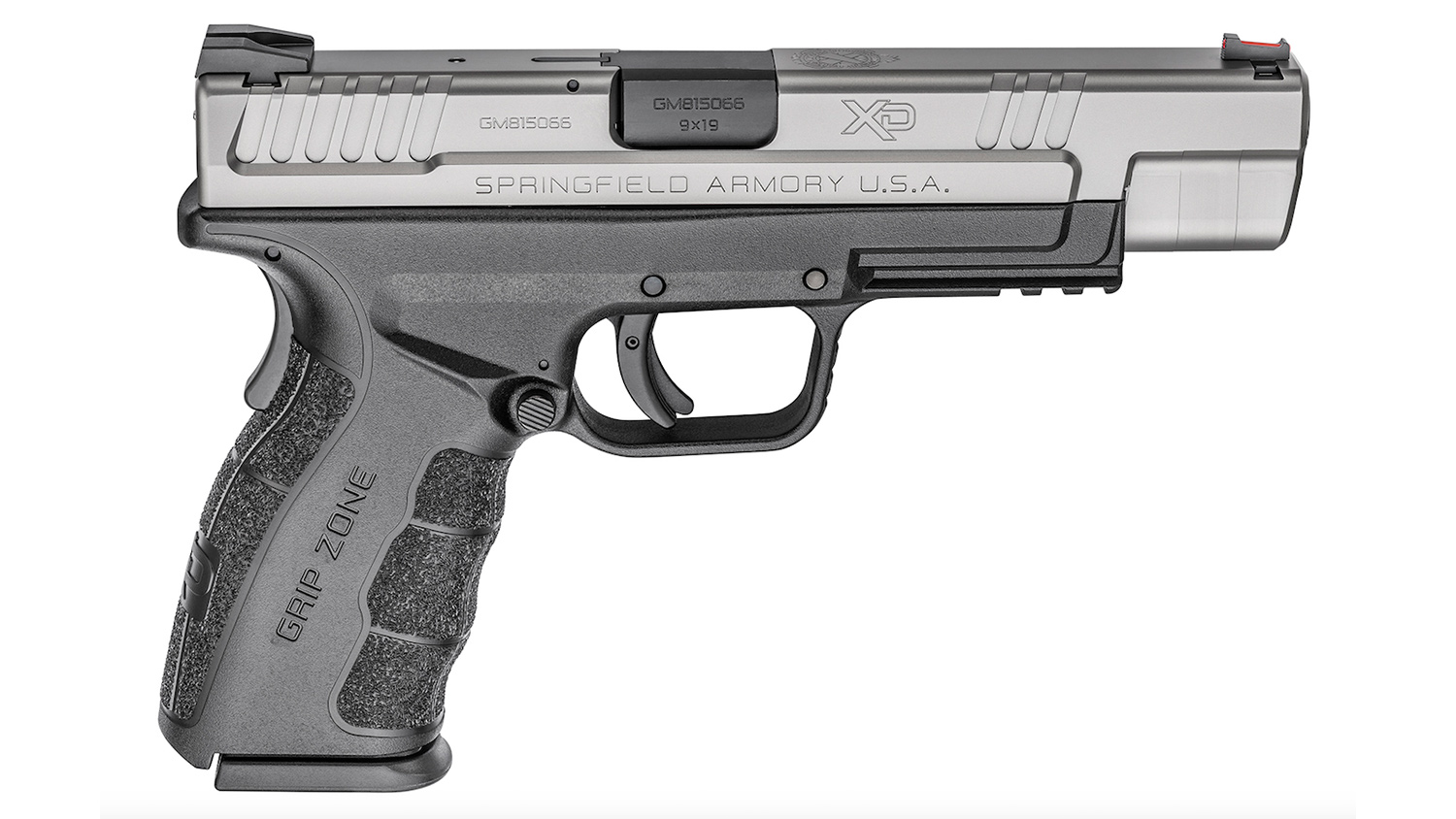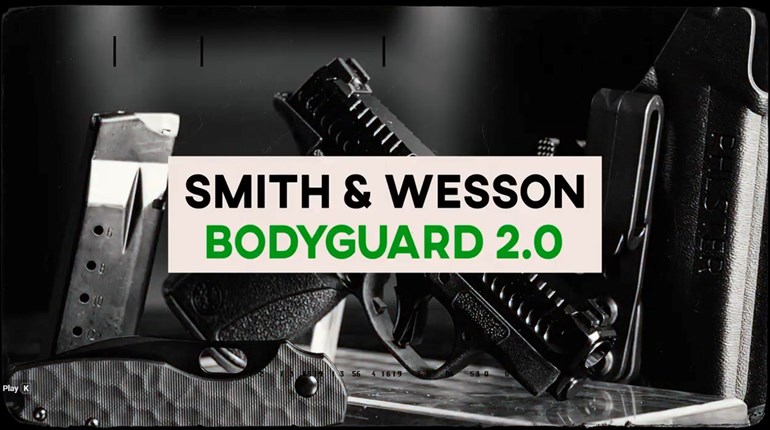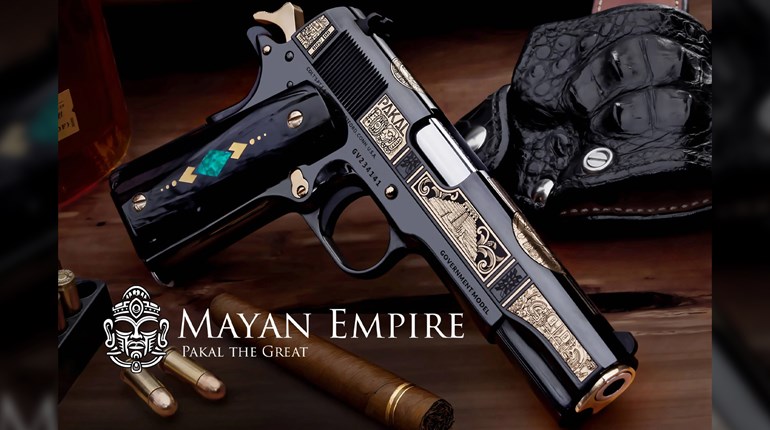
Fancy high-tech handguns garner a lot of attention. It’s not hard for someone who is unfamiliar with the action shooting games to watch a shooter blaze through a course of fire with an Open Class pistol—with optical sights, compensator, Go-Pedal, slide racker, custom grips, 30-round magazines and a price tag in the $3,000-plus range. Most would immediately conclude, “I can’t afford to play that game.”
The reality, however, is quite different. The vast majority of handguns used in action pistol competition are the same basic iron-sighted semi-automatic models that you’ll see in the holsters of law enforcement officers, military personnel, or civilians for personal defense. In fact, the competitive divisions offered by the major shooting organizations are deliberately set up to accommodate them!
There are a number of “off-the-shelf” pistols that can win; and have won. What the shooter needs to understand is what division the guns are legal equipment for, and what the Power Factor requirements are for that division.
The Power Factor (PF) is a simple mathematical formula that determines the relative power of the cartridge, irrespective of caliber. Multiply the bullet velocity by the bullet weight and divide by 1,000. If the resulting figure is between 125 and 164, it’s a Minor caliber. If it’s 165 and above it’s a Major caliber.
Most divisions allow Minor or Major calibers. The 9 mm is always a Minor caliber in the iron-sighted gun divisions. The .40 S&W and .45 ACP make Major, but can also be downloaded by handloaders to make Minor in order to reduce recoil in those divisions where Minor is all that’s required.
The United States Practical Shooting Association (USPSA) offers Production Division (which is scored Minor regardless of the caliber used). Their Limited 10 and Limited divisions allow Minor and Major, but score hits outside the A Zone higher for Major calibers.
The International Defensive Pistol Association (IDPA) has no Major/Minor scoring difference and offers Stock Service Pistol (SSP), Enhanced Service Pistol (ESP), Compact Carry Pistol (CCP) and Custom Defensive Pistol (CDP). Minor caliber is the preferred choice for the first three (although Major calibers can be used), while CDP requires a .45 ACP cartridge at a Major PF.
There are many common handguns that not only fit these divisions well, but have emerged as division winners. Below are five top choices that can be had for less than $700 (in order of cost, low to high).
Ruger American Pro Model
The Ruger American is the company’s first polymer-framed centerfire semi-auto. It’s a distinct departure from their previous models and incorporates some innovative features. Having done a review of the gun there is no need to rehash all of those here. But there are some features that are advantageous to competitive shooters worth mentioning again.

The gun is truly ambidextrous; with both right- and left-side magazine and slide release controls. That makes it an excellent choice for southpaws. The backstraps and front strap feature a well-textured surface, which will be much appreciated during a sweaty summer match, and three different-sized interchangeable backstraps allow for a high degree of individual hand fitting.
The Pro Model ($579) is available in a 4.2-inch barrel 9 mm (17-round magazines) that is legal in all the above divisions, except for IDPA CDP which requires a .45 ACP. It is also available in .45 ACP with a 4.50-inch barrel (10-round magazines) that is legal in all divisions, except for IDPA CCP which has a 4 3⁄8-inch barrel limit. It’s an excellent choice for CDP or USPSA Limited 10.
Smith & Wesson M&P 2.0
It didn’t take long after the 2005 introduction of the M&P before the guns began showing on top of the leader board in IDPA and USPSA matches. The newly-introduced 2.0 version ($599) isn’t going to change that. What the new model does is simply add some refinements to an already effective polymer-frame handgun design.

There are a number of model variations in the new line up at the same basic price, and all can appeal to shooters in various IDPA and USPSA competition divisions. The basic models in a matte black finish do not have a thumb safety or a magazine safety; neither of which is needed on a competition gun. The 9 mm (17-round magazines) and the .40 S&W (15-round magazines) feature 4.25-inch barrels. The .45 ACP (10-round magazines) has a 4.6-inch barrel.
The 9 mm and the .40 S&W are legal in all divisions except for IDPA CDP. The .45 ACP version is legal in all divisions except IDPA CCP.
For those who prefer a longer barrel length, the 9 mm and .40 S&W are available in 5-inch barrels in Flat Dark Earth finish, with a thumb safety (that is, basically, an optional feature and not needed for gun operation). They are legal equipment in all divisions except for IDPA CDP and CCP.
For a handloader the 5-inch .40 S&W, with the longer sight radius is an intriguing option. At Major, it’s a great choice for Limited 10 and Limited, while downloading it lets it play comfortably, and effectively, in SSP, ESP, and Production. That’s a lot of bang for $599!
Springfield Armory XD Mod.2 5-Inch Tactical 9 mm
Springfield Armory entered the polymer-frame handgun market in 2001 with the introduction of the XD Series. Unlike other polymer models it featured a grip safety like the 1911. It also provided the same basic grip angle as the 1911 combined with a striker-fired action, crisp trigger and extended magazine capacity. It became a popular choice for Action Pistol competitors.

The new Mod 2 Tactical follows the basic design, but offers ergonomic enhancements and a reduced price tag. The 9 mm Tactical model ($608, or $651 as pictured above with stainless steel bi-tone finish) features a 5-inch barrel, 16-round magazines, a fiber optic front sight and a low-profile steel rear sight. Empty weight is 29-ounces, and the grip width has been reduced to 1.20-inch. With that has come redesigned gripping surfaces and a higher grip safety to enhance shooter control. It’s legal in all divisions except CDP and CCP, and an excellent choice for Production, SSP and ESP.
The same gun is also available in .45 ACP ($637) with 13-round magazines and a 31-ounce empty weight. It’s a fine choice for CDP or Limited 10.
CZ-USA CZ 75 SP-01 Phantom
Introduced in 1975, the steel-framed CZ 75 was an innovative design that allowed shooters to choose a hammer down carry with the first shot double action and the rest single action, or a “cocked and locked”single action carry. It has spawned a number of models built on the same basic platform. One model that has proven very popular with Action Pistol shooters is the CZ 75 SP-01 Phantom ($636).

The Phantom is a polymer-framed version that eliminates the “cocked and locked” feature. It is a traditional DA/SA gun, with the first round fired DA and subsequent rounds fired SA. A decock lever returns the gun to the DA condition.
Chambered in 9 mm it features a 4.6-inch barrel, 18+1 magazine capacity, and weighs in at 29.4-ounces empty. The sights are a three white-dot pattern.
It’s legal in all divisions, except for IDPA CCP and CDP. The Phantom has become a proven winner in IDPA SSP and USPSA Production division.
GLOCK 34 and GLOCK 35
Originally developed as a duty sidearm for the Austrian military, the 9 mm GLOCK 17 became the first polymer-framed pistol to achieve widespread success. Numerous models followed in various calibers. It has not only become one of the most popular semi-autos on the market, but a commonly-used law enforcement sidearm. Such guns invariably wind up in the action shooting games and both the GLOCK 34 and 35 were designed for that.

The G34 ($679) is chambered for 9 mm, with 17-round magazines, and a 25.77-ounce empty weight. The G35 (also $679) is the same gun in .40 S&W, with 15-round magazines (with an optional 22-round magazine available) and tips the scales at 27.18-ounces. Both guns feature 5.31-inch barrels for an increased sight radius.
The G34 and G35 are legal in all divisions except IDPA CDP and CCP. The G34 is a proven winner in IDPA SSP and USPSA Production, while the G35 in one of the dominant pistols in USPSA Limited, and very effective in Limited 10.
Conclusion
With any of these guns, shooters will need a couple extra magazines, a mag carrier, and at least one decent holster. But, those costs are still minuscule when compared to the gear needed to purchase and run a $3,000-plus Open Class gun.
Big bucks aren’t required to win big in action shooting.


































